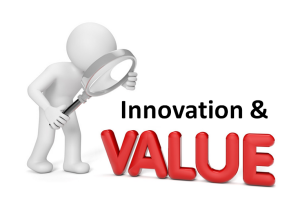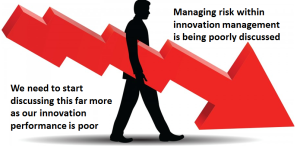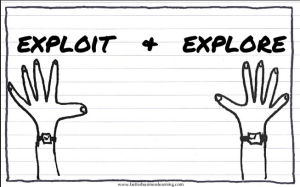 Innovation needs to create value, both short-term and progressively over time. It fuels the growth and fires the imagination.
Innovation needs to create value, both short-term and progressively over time. It fuels the growth and fires the imagination.
Yet our innovation activities are constantly coming up short for the leaders within our organizations, who continue to remain disappointed in its final outcome to stimulate and drive the growth they want to see.
It is actually the classic “chicken and egg”. Aristotle (384–322 BC) was puzzled by the idea that there could be a first bird or egg and concluded that both the bird and egg must have always existed. Leaders need to lead and are they the chicken, they are the resource for how can the people charged with innovation can lay the ‘golden eggs’ needed, if they are incapable of laying? Or should the innovation egg come first for our leaders to become more confident and build further, believing in innovation far more?
There should be no dilemma we can’t treat innovation lightly anymore, it needs to develop its uniqueness for each of our organizations to evolve. We need both the egg and the chicken to be ‘producing’.
What I’m driving towards here is that innovation is evolving is my 1st point
Continue reading “Constructing Innovation as Value Management”
Month: November 2015
The Challenges Being Faced by Innovation Consultants
 From my perspective, I’ve been looking at a real challenge today, that many consultants offering innovation services are not providing real sustaining consulting value to clients, only ad-hoc services.
From my perspective, I’ve been looking at a real challenge today, that many consultants offering innovation services are not providing real sustaining consulting value to clients, only ad-hoc services.
Unless this changes it will continue to erode the clients’ confidence in these service providers and they will be seeking increasing internal solutions to tackle their problems. I think if this trend continues it will be a mistaken course.
Consultants are not addressing many of the changes occurring and ignoring opportunities to adapt to different circumstances, they are simply not putting up a strong case of their engagement by redesigning their business models or opening themselves up to different forms of collaboration.
In many ways, the consulting industry specializing in innovation is its own worst enemy.
It is highly fragmented, often highly specialized in certain innovation practices, and much of the advice comes from a cottage industry of independent practitioners, caught up in executing and little time for advancing their own knowledge. Continue reading “The Challenges Being Faced by Innovation Consultants”
Risk and Innovation frustrate me
 I have been really struggling in the past few weeks.
I have been really struggling in the past few weeks.
Partly a niggling health issue finally got resolved with a ‘delightful’ week in the hospital, a couple of operations later, with a reasonably speedy recovery now thankfully underway.
The plan of course was for me to really use this confinement period as one of those opportunities to catch up on an awful lot of reading around innovation, planning out some areas to focus upon in the coming months and year ahead.
My logic was at the time, well this is similar to a long train journey or flight, you use this time and climb into a number of areas that have been quietly ‘festering’ away in the back of my mind, sitting on my desk or tucked away in my computer.
Continue reading “Risk and Innovation frustrate me”
Building the new dynamics into our capacity to innovate
 Do we know what are the dependencies and requirements for building and sustaining your organizations innovation success?
Do we know what are the dependencies and requirements for building and sustaining your organizations innovation success?
How do you sustain innovation, is it more through the structuring of everyday work, by creating a particular set of social rules and resources that foster specific routines? Or something different?
We work really hard at maintaining these re-occurring processes, never willing to extend and push them in different and new ways. We have actually become very static in our approaches and learning, we are not learning anew.
We often simply end up with incremental innovation that might just ‘nudge’ the growth needle but does little more than sustain us in the present and can be ‘contained’ in a tidy process that makes many, including the ‘bean counters,’ very happy until someone changes the game.
Then we need to think differently but this is usually far too late.. As demand is more volatile today we need to experiment, explore, learn and adjust. What becomes more important is the ‘work to be done, and how we go about tackling this and not the work done where we often simply ‘default too. Surprisingly Adam Smith identified this important difference in work way back in 1776.
Continue reading “Building the new dynamics into our capacity to innovate”